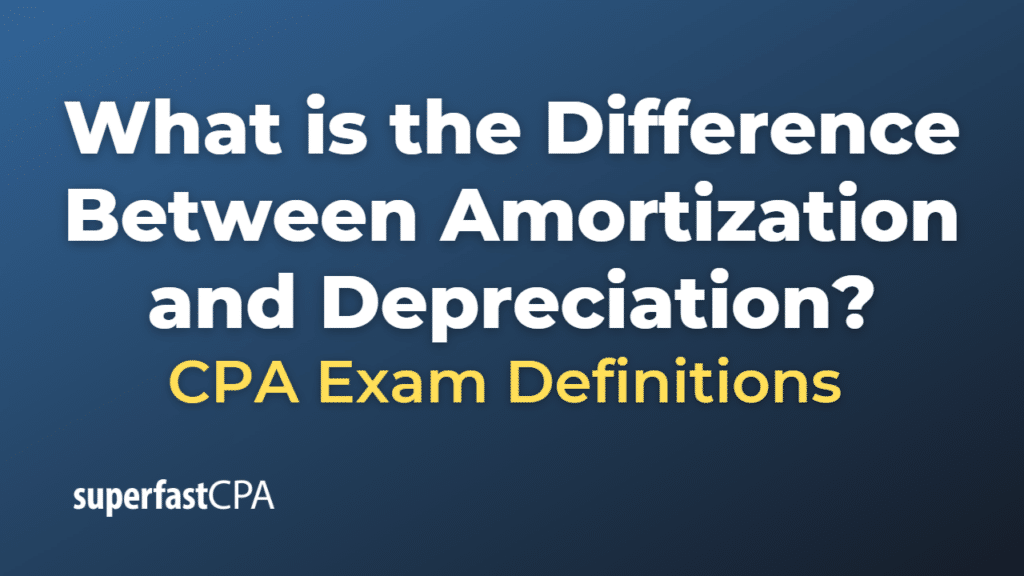Difference Between Amortization and Depreciation
Depreciation and amortization are both accounting methods used to spread the cost of an asset over its useful life, but they apply to different types of assets.
Depreciation is used for tangible assets, or physical assets, like buildings, machinery, equipment, vehicles, and furniture. These assets wear down over time due to physical use and are depreciated to reflect this decrease in value.
For example, if a company purchases a machine for $100,000 and expects it to have a useful life of 10 years, it could depreciate the machine by $10,000 each year. This way, the cost of the machine is spread out over the 10 years it’s expected to be in use.
Amortization, on the other hand, is used for intangible assets, which are non-physical assets like patents, trademarks, copyrights, goodwill, and software. These assets don’t physically wear out, but they may become obsolete or lose their value over time, or their use may be legally restricted to a certain period of time.
For example, if a company purchases a patent for $20,000 and the patent is legally valid for 20 years, the company could amortize the patent by $1,000 each year. This way, the cost of the patent is spread out over the 20 years it’s expected to provide value to the company.
In both cases, the purpose is to match the expense of the asset to the revenues it helps to generate, in accordance with the matching principle in accounting. This provides a more accurate view of a company’s profitability and financial health. However, the methods and rules for calculating depreciation and amortization can be complex and may vary according to different accounting standards and tax laws.
Example of the Difference Between Amortization and Depreciation
Depreciation Example:
Let’s say a transportation company purchases a new delivery truck for $50,000. The truck has an estimated useful life of 5 years, and after 5 years, the truck is expected to have a salvage value of $10,000.
Using the straight-line method of depreciation, the company would calculate annual depreciation as follows:
\(\text{Depreciation expense per year} = \frac{\text{Cost of asset – Salvage value}}{\text{Useful life}} \)
\( = \frac{\$50,000 – \$10,000}{5} \)
\( = \text{\$8,000 per year} \)
So, the company would record a depreciation expense of $8,000 each year for 5 years, reducing the truck’s book value by this amount each year.
Amortization Example:
Now let’s say a software company purchases a patent for a new technology for $20,000. The patent is valid for 10 years, after which it expires (this is the patent’s legal life).
Using the straight-line method of amortization (which is generally the method used for intangible assets), the company would amortize the patent as follows:
\(\text{Amortization expense per year} = \frac{\text{Cost of patent}}{\text{Useful life}} \)
\(= \frac{\$20,000}{10} \)
\( = \text{\$2,000 per year} \)
So, the company would record an amortization expense of $2,000 each year for 10 years, reducing the patent’s book value by this amount each year.
These examples illustrate how both depreciation and amortization involve spreading out the cost of an asset over its useful life. The difference is that depreciation is used for tangible assets (like the delivery truck), while amortization is used for intangible assets (like the patent).












